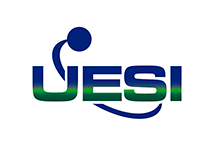The Gulf Coast’s dynamic marine environment makes underwater infrastructure inspection uniquely challenging. Bridges, pipelines, coastal defenses, and offshore facilities face high turbidity, strong currents, and corrosive saltwater that can quickly damage critical assets. Reliable ROV inspection services—including remote underwater visual inspections, subsea ROV surveys, and remotely operated vehicle evaluations—are essential for spotting defects before they become costly failures. Yet many asset owners and contractors fall into avoidable traps that undermine inspection value. Steering clear of these errors is vital for safety, regulatory compliance, and long-term cost control.
Technical & Operational Mistakes
Inadequate Vehicle Selection
A frequent misstep is choosing an ROV for its low price rather than operational suitability. Bargain units often lack the stability, sensor integration, and maneuverability needed for demanding Gulf Coast projects. Without equipment designed for strong currents and variable depths, inspections risk incomplete coverage, poor data, and unexpected downtime. Critical assets such as subsea pipelines or bridge pilings require the precision only professional-grade ROV inspection services can deliver.
Poor Localization & Positioning
Accurate positioning is vital during subsea ROV surveys, yet some teams rely on low-accuracy tools like fluxgate compasses in areas with strong magnetic interference. High turbidity and the absence of GNSS signals underwater make localization even harder. If coordinates drift, cracks or corrosion may be missed, compromising the entire inspection.
Unreliable Launch and Recovery Systems
Launching and recovering an ROV in the Gulf’s often-rough seas demands robust systems. Neglecting this step can damage equipment or cause delays that inflate costs. A solid launch-and-recovery plan, with proper winches and vessel support, ensures safe, efficient deployment during remotely operated vehicle evaluations.
Data and Analysis Mistakes
Low-Quality Data Output
Many manually controlled ROVs produce low-resolution visuals that make it difficult to identify corrosion, fatigue cracks, or biofouling. Poor lighting, limited camera angles, and unstable flight paths further reduce the footage’s value. Weak data hampers immediate decision-making and limits the ability to track deterioration over time.
Lack of Comprehensive Data Integration
Collecting terabytes of sonar and video means little without solid analysis. Teams often fail to merge optical images, sonar scans, and laser measurements into a cohesive model. Without a unified digital record, accurate 3D reconstructions or predictive maintenance planning is impossible. High-quality ROV inspection services must include post-processing workflows that turn raw data into actionable engineering insights.
Strategic & Economic Mistakes
Short-Term Cost Focus
Focusing only on upfront expenses is a costly long-term error. Cheaper ROVs typically need more maintenance, suffer longer downtime, and require early replacement. Considering the entire life-of-field cost—from training and repairs to data management—offers a more realistic view of total ownership.
Neglecting a Life-of-Field Approach
Some owners treat inspections as one-time events rather than part of a broader Inspection, Maintenance, and Repair (IMR) strategy. Without a long-term plan, small defects can grow into major failures demanding expensive emergency work. Reliable subsea ROV surveys should be scheduled regularly and integrated into the asset’s full lifecycle management.
Environmental & Regulatory Mistakes
Ignoring Harsh Gulf Conditions
The Gulf Coast’s high hydrostatic pressure, corrosive saltwater, shifting sediments, and strong currents require specialized ROVs with corrosion-resistant materials, advanced thrusters, and redundant power systems. Overlooking these factors leads to equipment failures and incomplete inspections during remotely operated vehicle evaluations.
Outdated Regulatory Guidance
Regulations sometimes lag behind technology, complicating compliance when new inspection methods emerge. Failing to keep up with evolving standards can lead to costly rework or fines. Asset owners should partner with inspection firms that actively engage with regulatory bodies and maintain current certifications.
How Underwater Engineering Services (UESI) Adds Value
To avoid these pitfalls, Gulf Coast operators increasingly turn to integrated providers such as Underwater Engineering Services, Inc. (UESI). UESI delivers a full suite of marine construction, commercial diving, and ROV inspection services tailored to the region’s demanding environment.
- End-to-End Capabilities – UESI manages permitting, mobilization, and logistics, ensuring smooth operations from planning through reporting.
- Advanced Technology – Their fleet supports remote underwater visual inspections, subsea ROV surveys, and advanced sensor integration, delivering high-resolution data even in low-visibility waters.
- Expert Team – UESI’s experienced pilots and engineers convert raw data into actionable maintenance and repair plans, reducing downtime and extending asset life.
By combining inspection, engineering, and marine construction, UESI eliminates the disconnect between data collection and practical remediation.
Avoiding Common Mistakes Related to ROV Inspection Services in the Gulf Coast
The Gulf Coast’s underwater infrastructure requires more than basic equipment and a quick look beneath the surface. From inadequate vehicle selection to incomplete data analysis, common mistakes can lead to missed defects, unreliable data, and regulatory issues. Successful ROV inspection services demand robust technology, trained operators, integrated data analysis, and a long-term maintenance strategy.
Partnering with experienced providers like Underwater Engineering Services ensures that remote underwater visual inspections, subsea ROV surveys, and remotely operated vehicle evaluations deliver accurate, actionable insights. Avoiding these common errors and investing in quality from the outset allows infrastructure owners to safeguard assets, meet regulatory requirements, and control costs throughout a project’s life.




